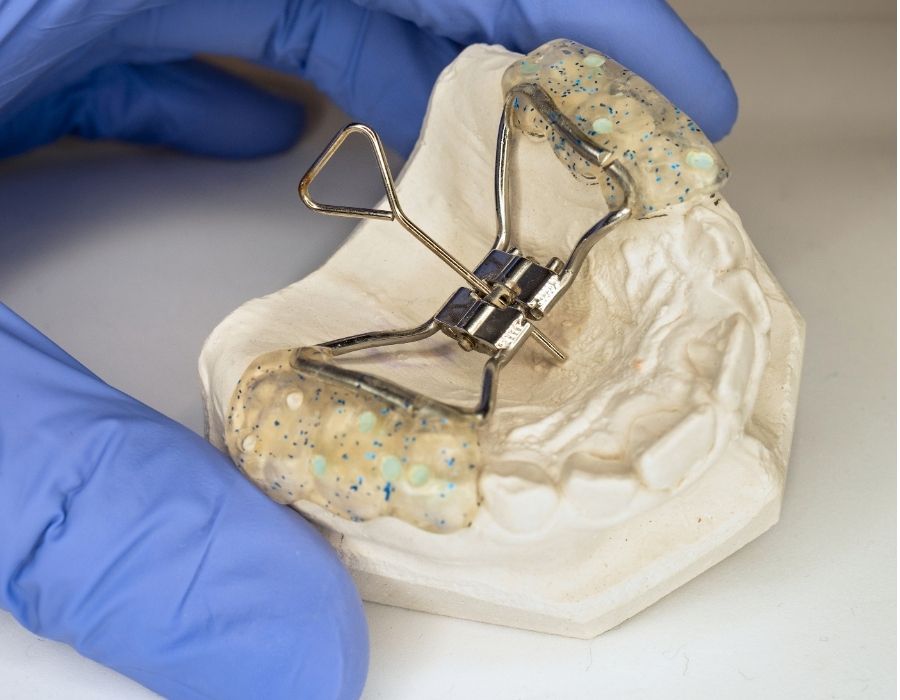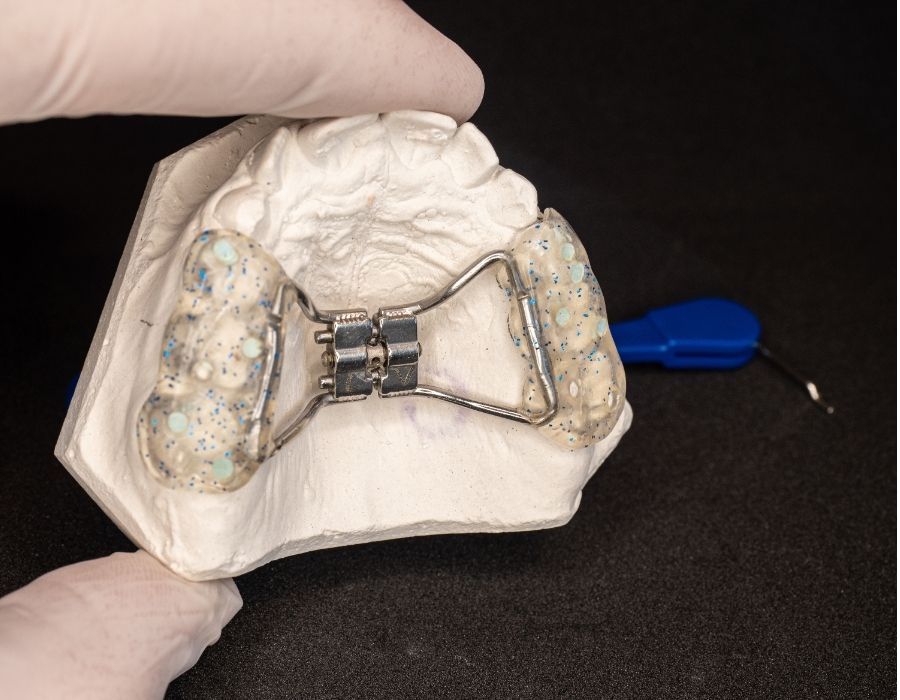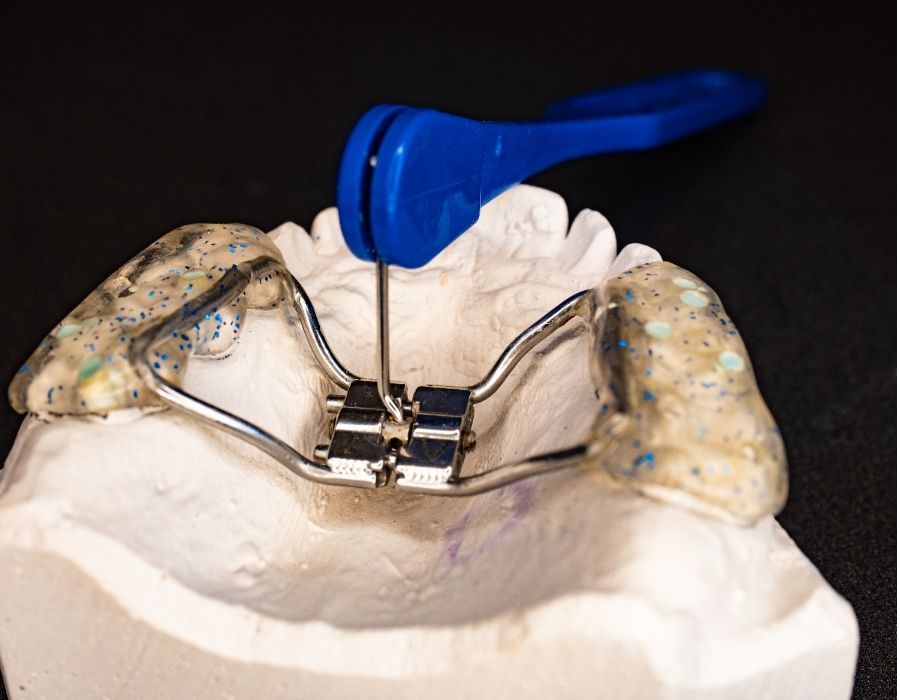If you’re a parent in Bluffton, SC, exploring effective orthodontic solutions for your child, understanding the role of palatal expanders is essential. These orthodontic devices are designed to gently widen the upper jaw, addressing issues such as dental crowding, crossbites, and breathing difficulties. Early intervention with palatal expanders can guide proper jaw development, potentially reducing the need for more extensive treatments later on. By gaining insight into how palatal expanders work and their benefits, you can make informed decisions to support your child’s journey toward a healthier, more confident smile.
What is a Palatal Expander?

A palatal expander is a custom-fitted orthodontic appliance designed to gradually widen the upper jaw (maxilla). This device is particularly effective in children and adolescents, as their jawbones are still developing and more responsive to orthopedic changes. By applying gentle pressure over time, the expander encourages the two halves of the upper jaw to move apart, creating additional space in the mouth. This expansion facilitates proper alignment of teeth and can improve overall oral function.
The use of a palatal expander can address various dental issues, including crossbites, overcrowding, and breathing difficulties. By widening the upper jaw, it allows for better alignment between the upper and lower teeth, reducing the risk of misalignment and associated complications. Additionally, expanding the palate can open up nasal passages, enhancing airflow and potentially alleviating issues related to mouth breathing or sleep-disordered breathing. Early intervention with a palatal expander can guide proper jaw development, potentially reducing the need for more extensive treatments later on.
Why Consider a Palatal Expander?
Palatal expanders are versatile orthodontic devices designed to address several common dental and health concerns in growing children. By gently widening the upper jaw, they create additional space in the mouth, facilitating proper alignment of teeth and improving overall oral function.
One primary reason to consider a palatal expander is to alleviate dental crowding. When the upper jaw is too narrow, it can lead to overlapping or misaligned teeth due to insufficient space. Expanding the palate allows permanent teeth to emerge in their correct positions, often reducing or eliminating the need for tooth extractions .
Another significant benefit is the correction of crossbites. A crossbite occurs when the upper teeth bite inside the lower teeth, which can cause uneven wear on teeth and strain on the jaw muscles. Palatal expanders help align the upper and lower jaws properly, promoting a healthier bite and preventing potential jaw issues .
Additionally, palatal expansion can improve breathing difficulties associated with a narrow upper jaw. By widening the palate, the nasal passages can also expand, enhancing airflow through the nose. This improvement can be particularly beneficial for children who experience chronic mouth breathing or sleep-related breathing disorders.
Early intervention with a palatal expander is crucial, as it takes advantage of the natural growth processes in children and adolescents. Addressing these issues promptly can lead to more effective and less invasive treatments, setting the foundation for a lifetime of better oral health.
Types of Palatal Expanders

- Rapid Palatal Expander (RPE): A fixed appliance attached to the upper molars, featuring a central screw that is turned periodically to apply outward pressure, gradually widening the upper jaw. This method is particularly effective in children and adolescents whose palatal bones have not yet fused.
- Removable Palatal Expander: Resembling a retainer, this device can be taken out for cleaning and eating. It’s suitable for patients requiring minor expansion and who can adhere to the wear schedule prescribed by their orthodontist.
- Surgically Assisted Rapid Palatal Expander (SARPE): Employed in adults where the palatal bones have fused, this method combines surgical intervention with an expander device to widen the upper jaw. It’s effective for correcting severe maxillary constriction and associated dental issues.
Your orthodontist will determine the most appropriate type of palatal expander based on factors such as age, dental structure, and specific orthodontic goals.
The Treatment Process
The treatment process for a palatal expander involves several key stages, each essential for achieving optimal results:
Consultation and Assessment
The journey begins with a comprehensive evaluation by an orthodontist. This includes a clinical examination, X-rays, and dental impressions or digital scans to assess the structure of the upper jaw and determine the necessity of expansion. Based on these findings, a personalized treatment plan is developed to address specific orthodontic needs.
Placement of the Expander
Once the treatment plan is established, the custom-fabricated palatal expander is fitted. For fixed expanders, the device is cemented onto the upper molars, ensuring stability. Removable expanders are designed to fit snugly and can be taken out for cleaning. The orthodontist provides detailed instructions on care and maintenance of the appliance.
Activation Phase
Activation involves adjusting the expander to gradually widen the upper jaw. This is typically done by turning a central screw using a specialized key, as directed by the orthodontist. Each adjustment applies gentle pressure, encouraging the mid-palatal suture to expand. The activation schedule varies but often includes daily or weekly turns over a period of several weeks.
Monitoring Progress
Regular follow-up appointments are essential to monitor the expansion progress and make necessary adjustments. The orthodontist assesses the widening of the palate and ensures that the expansion is proceeding as planned. These visits also provide an opportunity to address any concerns and reinforce proper care techniques.
Retention Phase
After achieving the desired expansion, the expander remains in place for several months to stabilize the new bone growth. This retention period allows the palate to solidify in its new position, preventing regression. In some cases, a separate retainer may be provided to maintain the expansion results.
Throughout the treatment, patients may experience mild discomfort, such as pressure or soreness, especially during the initial activation phase. These sensations are typically temporary and subside as the mouth adjusts to the appliance. Maintaining good oral hygiene and following the orthodontist’s instructions are crucial for the success of the treatment.
Cost Considerations in Bluffton, SC
The cost of a palatal expander in Bluffton, SC, typically ranges from $1,000 to $3,000, depending on various factors such as the type of expander used, the complexity of the case, and the orthodontist’s experience. This estimate generally includes the initial consultation, the custom-fabricated appliance, fittings, and follow-up appointments for adjustments and monitoring progress.
It’s important to note that these costs can vary based on individual treatment plans. For instance, removable expanders may be on the lower end of the price spectrum, while fixed or surgically assisted expanders could be more expensive due to the complexity of the procedure .
Many orthodontic practices in Bluffton offer flexible payment plans to make treatment more accessible. Additionally, dental insurance may cover a portion of the cost if the treatment is deemed medically necessary. Coverage can vary, so it’s advisable to consult with your insurance provider and the orthodontist’s office to understand your benefits and any out-of-pocket expenses.
To obtain a precise estimate tailored to your or your child’s specific needs, it’s recommended to schedule a consultation with a local orthodontist. They can provide a comprehensive evaluation and discuss the most appropriate treatment options, associated costs, and available financing plans.
Achieving Optimal Oral Health Through Palatal Expansion

Palatal expanders are a cornerstone of early orthodontic treatment, effectively addressing issues such as crowded teeth, crossbites, and breathing difficulties. By gently widening the upper jaw, these devices create the necessary space for proper dental alignment and can enhance nasal airflow, contributing to improved overall oral health. Early intervention with palatal expanders can simplify future orthodontic procedures, potentially reducing the need for more invasive treatments later on.
For families in Bluffton, SC, considering orthodontic options for their children, consulting with a local orthodontist is a crucial step. By seeking professional guidance, you can ensure that your child embarks on a path toward a healthier, more confident smile.








